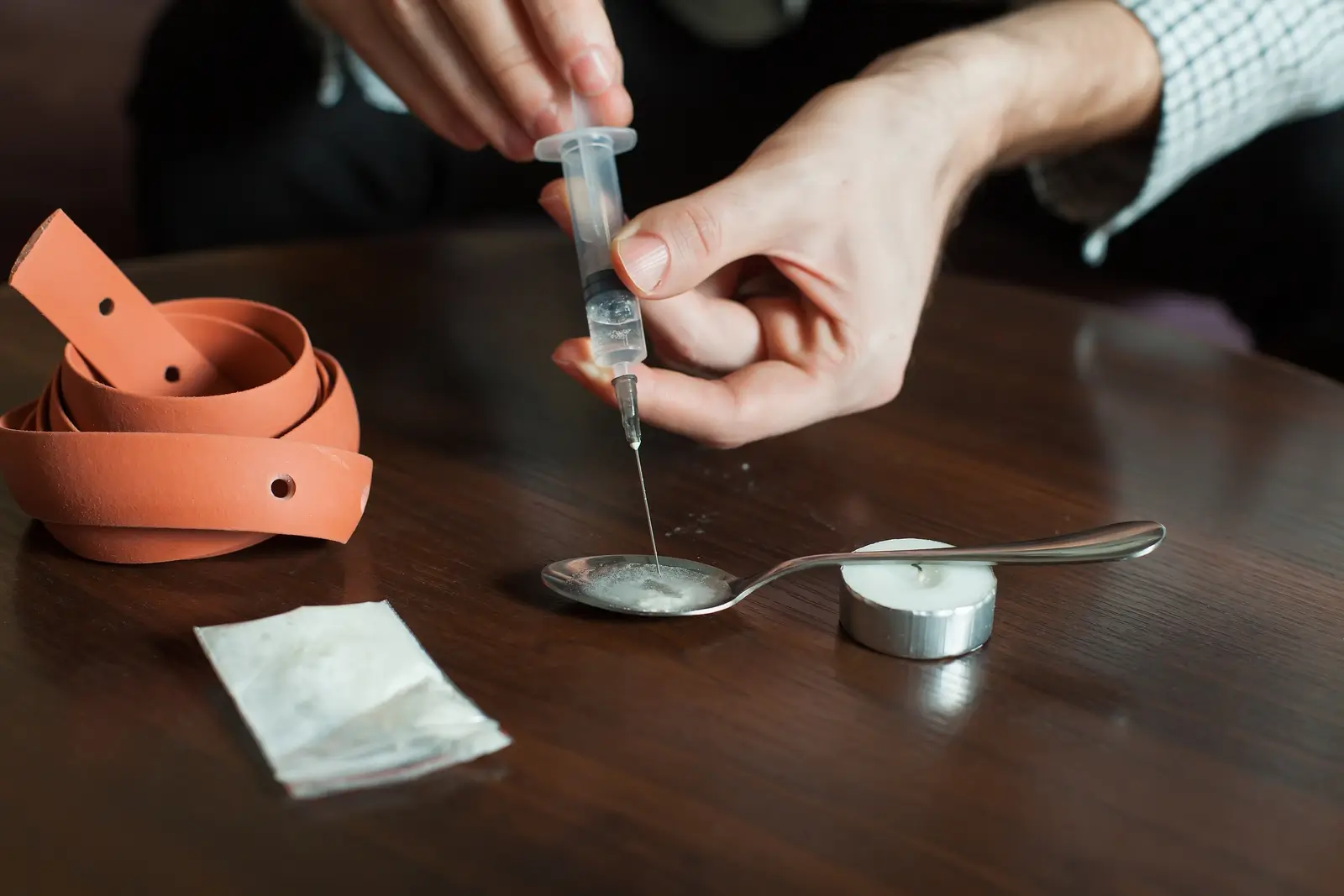
What Is Cotton Fever and How Is It Treated?
Key Points
- Cotton fever is a serious medical condition caused by the use of cotton filters when injecting intravenous drugs.
- Symptoms of cotton fever include sudden high fever, nausea, chills, increased heart rate, and muscle pain.
- The duration of cotton fever can vary, lasting between six hours and two days.
- Cotton fever doesn’t usually require hospitalization or professional medical care and usually goes away on its own.
- Other dangers associated with intravenous drug use include injuries, infection, and substance use disorder.
- Symptoms of substance use disorder include intense cravings for the drug, being unable to control dosages, and experiencing withdrawal symptoms when abstaining from the drug.
- People with substance use disorder have a higher risk of overdosing on drugs, and injecting drugs intravenously can further enhance this risk.
- Common signs of a drug overdose can include drowsiness, changes in pupil size, confusion, and loss of consciousness.
- Harm reduction strategies and treatment options for substance abuse and addiction are available.
DISCLAIMER: Cotton fever is not a diagnosis, but a name, developed by illicit drug users to describe a set of symptoms sometimes associated with intravenous drug use. The validity of this condition is not widely accepted in the medical community and has not been confirmed by scientific studies or medical research.
There are some studies available that examine cotton fever, but the information is limited. Further research is needed to fully understand this condition and its impact on patients fully. My medical review does not constitute acceptance or validation of cotton fever as a distinct disease, nor does it confirm or deny what is presented as facts in this article. I have no opinion on the accuracy of this material and make no recommendations regarding cotton fever. Intravenous use of illicit drugs or drugs not specifically prescribed for you and taken as directed always carries a significant risk of adverse effects and complications, including death. – Dr. Coleman
What Is Cotton Fever?
Cotton fever is a serious medical condition experienced by intravenous drug users. It’s thought to be caused by using cotton balls as filters for IV drugs, which can cause exposure to bacteria (primarily Pantoea agglomerans, a microorganism), cotton fibers, and other contaminants. Cotton can cause uncomfortable physical and emotional symptoms for those who develop it.
The primary risk associated with cotton fever is not the condition itself but the practice that causes it. Injecting drugs intravenously poses many different health risks, including vein collapse, bacterial infections, and substance use disorder, to name just a few. Using intravenous drugs can also increase the risk of an overdose. If you or a loved one is addicted to a substance or uses drugs intravenously, help is available.
Symptoms of Cotton Fever
One of the primary concerns for people with cotton fever is that symptoms can reveal more serious infections and medical conditions. Common symptoms of cotton fever include: [1]
- Sudden high fever
- Nausea
- Vomiting
- Rapid heartbeat
- Stomach or abdominal pain
- Trouble breathing
- Headache
- Fatigue
- Muscle pain or weakness
- Chills and shivering
- Back pain
- Joint pain
These symptoms require medical attention, though some symptoms may resolve on their own. In many cases, the bacteria that cause cotton fever can infiltrate the heart and cause endocarditis, which is a much more serious condition. If you or a loved one is experiencing cotton fever symptoms alongside chest pain or shortness of breath, seek immediate medical attention.
How Long Does Cotton Fever Last?
Symptoms of cotton fever can appear as soon as 15 minutes after an intravenous drug injection. Sometimes, it can take up to half an hour for symptoms to emerge. The typical duration of cotton fever is between approximately 6 and 12 hours. For some people, symptoms can persist for up to 2 days. [2] If symptoms persist after 48 hours, you may want to contact a health care provider.
How Is Cotton Fever Treated?
Since cotton fever isn’t life-threatening or associated with any long-term effects, no clinical treatment is recommended. In most cases, self-care at home is advised. This may include over-the-counter fever reducers, rest, and warm baths to address symptoms. However, the presence of cotton fever could indicate a more serious condition, such as substance use disorder, that does require treatment.
Other Dangers of IV Drug Use
Any type of drug use is risky and ill-advised. Still, those who inject drugs may be at an increased risk of harm due to factors such as injection-related injury and infection. IV drug users also face the same risks as other types of drug users, including substance use disorder and overdose, for example.
Injection-Related Injury
The process of injecting a drug can pose certain risks to the body, especially around the injection site. In addition to superficial injuries like bruising and track marks, more serious injuries can also occur, including: [3]
- Vein collapse
- Embolism
- Abscess
Viral and Bacterial Infections
One of the dangerous risks of injecting IV drugs, aside from the dangers of the drugs themselves, is the other contaminants that may get into a person’s bloodstream, including bacteria and viruses. This can happen for a number of different reasons, including: [4]
- Contaminants in dissolving liquids
- Chemicals in the cigarette filter used to filter an injection
- Adulterants in the drugs being injected
- Improper cleaning of the skin at the injection site
Some of the different infections associated with IV drug use include: [5]
- Infective endocarditis
- Wound botulism
- Bacteremia
- Tetanus
- Necrotizing fasciitis
- HIV
- Hepatitis
Substance Use Disorder
Drugs that are commonly injected, including heroin, cocaine, and fentanyl, are among the most addictive substances in existence. They pose an extremely high risk of physical dependence and addiction. If a loved one is injecting drugs, be aware of the following signs and symptoms of substance use disorder, or SUD: [6]
- Intense cravings for the drug
- Using the drug in risky or dangerous situations
- Continuing to use the drug even though it’s exacerbating physical or mental health issues
- Trouble controlling dosages of the drug
- Continuing to use the drug despite it causing relationship problems or problems at home or work
- Giving up activities due to drug use
- Failing to meet responsibilities or deadlines due to drug use
- Unsuccessfully trying to quit or cut down on drug use
- Spending an excessive amount of time acquiring, using, or recovering from the drug
- Needing higher doses of the drug to achieve the same effect (also known as building tolerance)
- Experiencing withdrawal symptoms when not using the drug for a period of time
If you or a loved one is experiencing two or more of the symptoms below, it could be an indication of a mild substance use disorder. Four or five symptoms could indicate a moderate substance use disorder, while six or more symptoms point to a severe substance use disorder.
Risk of Drug Overdose
Substance use disorder increases the risk of overdosing on drugs, and this risk could be higher for those who inject drugs intravenously. Using drugs via an injection route speeds up their delivery to the brain, which could result in an overdose. The symptoms of drug overdose can vary based on the type of drug used. For example, an overdose on a central nervous system depressant such as an opioid drug can cause slowed or stopped breathing. On the other hand, overdosing on stimulant drugs such as cocaine or methamphetamine can result in a heart attack or stroke. Other common symptoms of a drug overdose include: [7]
- Nausea
- Vomiting
- Diarrhea
- Changes in pupil size
- Pain
- Drowsiness
- Loss of consciousness
- Loss of coordination
- Trouble breathing
- Confusion
- Agitation
- Paranoia
If a loved one is experiencing any of these symptoms after injecting illicit drugs, call 911 or seek emergency medical attention. A drug overdose can be life-threatening.
Addiction Treatment Resources
There is help available for intravenous drug abusers. Evidence-based treatments are often offered through accredited rehabilitation centers and treatment programs. This may include inpatient treatment, detox services, outpatient treatment, and aftercare support. You don’t have to face the obstacles of substance abuse and intravenous drug addiction alone.
Frequently Asked Questions About Cotton Fever
What is the quickest way to get rid of cotton fever?
Cotton fever typically has to run its course. There may be some home remedies you can try to speed up the recovery process, such as:
- Resting
- Staying hydrated
- Following a nutritious diet
- Use over-the-counter pain medications or fever reducers
- Try baths or warm or cold compresses to reduce fever or chills
Is cotton fever the same thing as sepsis?
No. Cotton fever and sepsis are two separate medical conditions. Sepsis is a much more serious condition. However, some of the symptoms of cotton fever can resemble sepsis.
Is cotton fever recognized by healthcare providers?
Not always. Cotton fever is well-known among drug users, but may not always be recognized by doctors or other health care professionals. This can result in misdiagnosis and unnecessary diagnostic tests.
Can you get cotton fever more than once?
Yes. You can get cotton fever any number of times. Each time a drug user filters an IV shot, there is a chance of getting cotton fever from bacteria or cotton fibers. The body doesn’t build an immunity to this condition, and the best way to prevent it is to avoid intravenous drugs altogether.
Can you get cotton fever without using drugs?
No. The only way to get cotton fever is through a cotton filter or cotton ball used during the process of injecting drugs. Avoiding drugs is the best preventative measure you can take to keep from getting cotton fever or other conditions, such as bacterial infections.
Can you die from cotton fever?
Cotton fever can cause a serious condition known as endocarditis, an infection of the inner heart lining, which can be fatal.
Sources
[1] [2] Xie, Y., Pope, B. A., & Hunter, A. J. (2016, April). Cotton fever: Does the patient know best?. Journal of General Internal Medicine. https://pmc.ncbi.nlm.nih.gov/articles/PMC4803705/
[3] [4] [5] Potential health complications of injection drug use. National Harm Reduction Coalition. (2020, September 1). https://harmreduction.org/issues/safer-drug-use/injection-safety-manual/potential-health-injections/
[6] What is substance use disorder?. Cleveland Clinic. (2025, July 7). https://my.clevelandclinic.org/health/diseases/16652-drug-addiction-substance-use-disorder-sud
[7] Overdose symptoms: What are signs of a drug overdose? – GoodRx. (n.d.-a). https://www.goodrx.com/conditions/substance-use-disorder/signs-symptoms-drug-overdose


